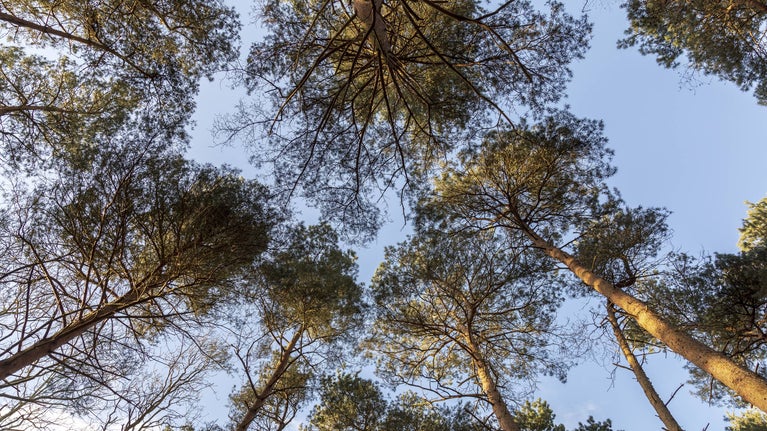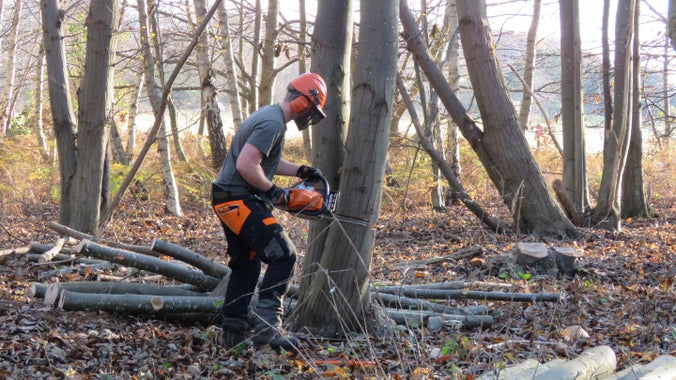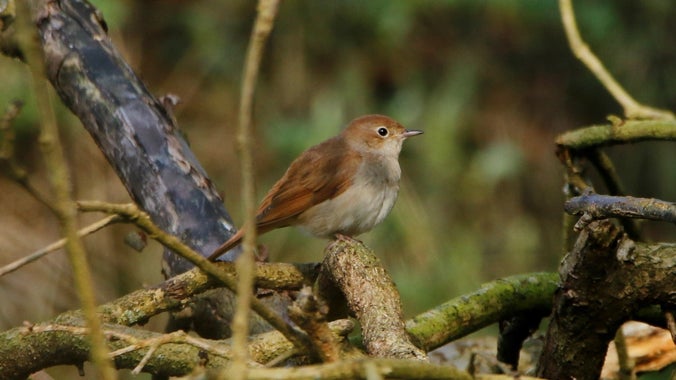Woodland management is helping to tackle climate change at Sutton Hoo
- Published:
- 28 November 2024
- Last updated:
- 28 November 2024

Endangered songbirds and wildflowers are reaping the benefits of traditional woodland management techniques at Sutton Hoo. traditional techniques to manage the woodland are being used to help tackle climate change.
To mark National Tree Week, the National Trust has released a new film highlighting how rangers at Sutton Hoo are using traditional woodland management techniques to improve biodiversity and sustainability at the countryside site.
Sutton Hoo is home to three main types of woodland – coppice, plantation and lowland mixed deciduous – which support a wide range of flora and fauna, including rare species of songbirds such as nightingales and woodland flowers such as primrose, wood anemone and red campion.
Since 2018, when the woodlands became part of National Trust land, rangers have reintroduced a number of traditional management techniques to improve the health of the woodland and increase biodiversity, while also reusing the felled timber across the site.
Jonathan Plews, Area Ranger at Sutton Hoo, says: “The two main methods that we’re using to manage our woodlands are coppicing and thinning - traditional techniques that we've recently reintroduced.
“Thinning is a process where we take roughly 30% of the trees out over a ten year period, which will increase regeneration and light levels and transition our plantation woodland into more native woodland.”

Plantation woodland is usually grown as a crop to meet the demand for certain types of timber. This means it matures at the same time and has a uniform age, size and height, with very limited diversity. These types of woodland are often seen in the UK in big blocks of conifer plantation, just like at Sutton Hoo.
Native woodland occurs more naturally and develops over time – often centuries - to offer a greater variety of species, ages, structure and light.
Coppicing, which involves the repeated cutting back of a tree to its base to encourage new growth, is also being used across the estate. Once the trees are coppiced, they’re left to grow for up to 25 years, with no further intervention.
Jonathan continues: “On first glance, coppicing does look quite severe, but by removing the canopy for a few years, we can allow increased light levels and warmth into the ground. This increases germination rates in the soil and encourages saplings, wildflowers and other specialist species, such as bramble, to come through.”

Bramble within scrub woodland is an important nesting habitat for nightingales, which are listed among the UK’s most threatened birds.
Famous for their distinctive song, they have seen a staggering population decline of 90 per cent in the past 50 years and now feature on the UK’s red list of conservation. Four pairs were recorded at Sutton Hoo in 2024, which is an increase from when active woodland management began at the site.
Within just a year of coppicing being reinstated, the ranger team has seen areas of the woodland come alive with birdsong, butterflies and beetles as a result of increased wildflowers, which provide vital food sources for pollinators and other insects, as well as birds and small mammals.
Both activities are carried out by a team of staff and volunteers who use chainsaws and a mini tractor, which limits disturbance to the woodland floor. This also helps to protect the known archaeological features of the historic woodland.
The timber produced as a result of this management is also being put to good use. The team at Sutton Hoo has invested in its own mill and now produces gates, fencing and signage for use on the estate, as well as benches for visitors to use and chopping boards and jewellery that can be bought from the gift shop. It’s also enabled the team to build a compost toilet for the site’s outdoor education area, furthering its aims to become more sustainable.
Matt Wilson, Countryside Manager for the National Trust’s Suffolk & Essex portfolio, says: “Sutton Hoo is known for its history and archaeology, but alongside that there’s a lot of work that goes into managing the estate.
"Around 25% of the total estate is made up of woodland, much of which can be accessed by visitors on our various walking trails. It’s actively managed as part of our land, outdoors and nature strategy, which helps us to not only support vital habitats for wildlife and increase biodiversity, but also look at how we can better and more sustainably manage our sites in response to climate change.
“We further cut, process and shape the timber for use across the estate, as well as at other properties elsewhere along the coast, which helps us to reduce our carbon footprint. The products that are sold in the shop also help us to raise vital funds, which allow us to continue with our conservation work.”